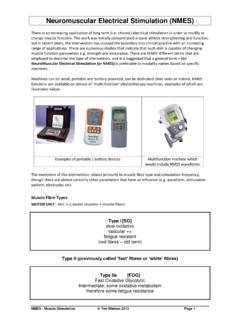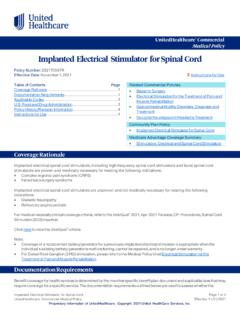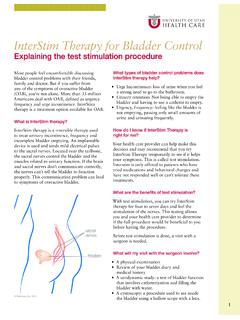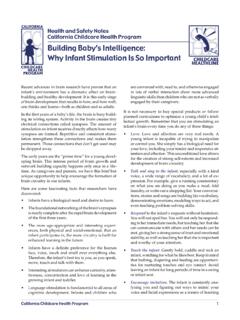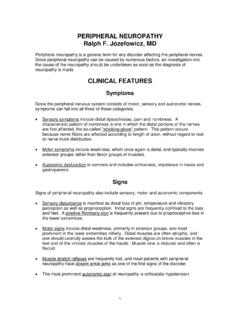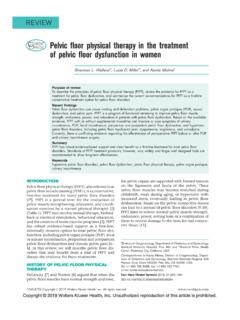Transcription of Temporary Cardiac Pacing
1 1 Temporary Cardiac Pacing2 Objectives Outline various types of Temporary Pacing Identify how Pacing method determined Outline insertion / application procedure for each type of Pacing Identify initial nursing care required3 Temporary Cardiac Pacing Temporary Cardiac Pacing is the application of an artificial electrical stimulus to the heart in the hope of producing a depolarization of Cardiac cells. It is done when the patients own intrinsic or built in ability to pace fails or to cause a more effective of Temporary Cardiac Pacing Transcutaneaous pacingvia multifunction pads attached to our Philips Defib machines set on Pacer Mode.
2 Transvenous pacingvia a Pacing wire that is inserted thru an introducer in a central large vein into the right ventricle, then attached to a pacer box (pulse generator box) via a Pacing cable. Epicardial Pacing (post Cardiac surgery) via epicardial Pacing wires inserted into the endocardium during Cardiac surgery that are attached to a pacer box (pulse generator box) via a Pacing Any slow rate where the patient is symptomatic The slow rate could be: Sinus Bradycardia 2ndor 3rddegree Heart Block Junctional rhythm Idioventricular rhythm The etiologies of these rhythm issues could be degeneration of conduction system, atherosclerosis, ischemia, drug induced (OD or antiarrythmics), conduction issues post Cardiac for Pacing6 Determination of Pacing Urgency of need is the prime determination for which Pacing method is used.
3 Trancutaneous patches are quick to apply, non-invasive, but should only be used for a short time. Transvenous Pacing should be provided when available: easiest route is right internal jugular or left subclavian; fluroscopy should be used but it can be attempted without it in an emergency Obviously, if the patient has epicardial wires post Cardiac surgery then this is the primary method of Pacing . 7 Overview of TerminologyPaceto deliver an electrical impulseSenseability of the pacemaker to detect intrinsic electrical activityPacing Spikestimulus from the pacemaker recorded on the ECG, a short narrow deflectionCapturedepolarization of the heart by an artificial stimulus; patients myocardial cells capture the impulse delivered by the pacemaker; pacer spike followed by a QRS associated with a pulse8 Overview of TerminologyPacing ThresholdAmount of energy required to initiate a depolarization.
4 For the cells to capture the impulse and is measured in milliamps (MA)Influenced by: Ischemia Drugs Electrolyte Imbalances Pacer wire position9 Terminology: Modes of PacingAsynchronous (Fixed Rate) delivers electrical stimuli at a selected rate regardless of patients intrinsic Cardiac activitySynchronous (Demand) delivers electrical stimulus only when needed pacemaker detects or senses the patients intrinsic electrical activity and inhibits the pacemaker from firing an electrical stimulus10 Pacing Device Depending on the device being used to pace you may be able to choose: Demand or asynchronous Pacing .
5 The rate at which you pace the patient s heart. The amount of energy in milliamps (mA) required for to cause a depolarization in the myocyte, referred to as capture . How sensitive you want the pacer box to be to the intrinsic activity of the review each of these settings generally before moving on to the specific in Demand ModeDemand (Synchronous) Mode In demand mode the stimulus is provided when the patient s heart rate drops below at predetermined rate. So if you have the rate of the pacer at 60, it won t pace until the patients heart rate falls below 60.
6 The pacer box must have adequate sensing for demand mode to work effectively. This is the preferred way of Pacing as it should avoid competition between the patients own heart rate and that of the pacer (Synchronous) ModePacemaker will emit an output only when there is no intrinsic activity13 Rates in Fixed ModeFixed (Asynchronous) Mode In fixed mode the stimulus is provided at a preset rate and the pacer fires at that rate regardless of what the patients heart is doing. If fixed rate is used and the patient has an underlying rhythm, the rate must be set greater than the patient s inherent rate to avoid competition There is a great risk for R on T phenomena with asynchronous Pacing (see Cardiac Anatomy Module 2 for more about R on T )14 Fixed (Asynchronous) ModePacemaker will emit an output at a fixed rateregardless of intrinsic activity15 Energy to Elicit Pacing The energy used by the pacer box to elicit a depolarization and contraction is measured in milliamps (mA).
7 Different hearts may require different amounts of energy to elicit a depolarization and contraction; the variables that could effect the amount of energy required include: position of electrode; contact with viable myocardial tissue; level of energy delivered through wire; presence of hypoxia, acidosis or electrolyte imbalances; other medications being used16 Ventricular PacingPacer SpikesWide QRS: because the beat is initiated away from the superhighway so it takes longer for the ventricle to depolarizeWhat does a ventricularly paced beat look like?
8 17 Capture When there is sufficient energy to cause a depolarization and contraction, it is referred to as capture . This strip shows three paced beats followed by the patients own intrinsic rhythm. Here is a strip with no underlying rhythm, just pacer spikes. If you saw this you would immediately turn up the mA to try and elicit a depolarization. Finally, after a couple of seconds the myocytes depolarization .. the Cardiac cells have captured the impulse and it is moving thru the 18 Energy to Elicit Pacing The higher the mA the more energy is being generated by the device to try and elicit a depolarization by the Cardiac cells.
9 If you do not see capture on the monitor then you would turn up the mA. You may hear this setting referred to as just mA or output or sometimes what are you capturing at ..19 stimulation Threshold The stimulation threshold is the minimum output pulse needed to consistently capture the heart and cause a depolarization and contraction. This should be checked regularly in order to see how much leeway you have to go up in milliamps should it be required. Turn the mA down until you no longer have capture .. that is your stimulation threshold.
10 Then set the mA at double or triple that mA2 mA1 mAThe stimulation threshold here is 1 mA so the pacers mA would be set at 2 or 3 mA 20 Sensitivity refers to the Pacing devices ability to see what electrical activity is being generated by the patients own heart to prevent any competition between the hearts intrinsic activity. This allows Pacing only on demand when the intrinsic heart rate is too low, The energy coming from the heart is measured in millivolts (mV). We can actually measure the mV s being produced by the heart on the graft paper our ECG strips are on.
